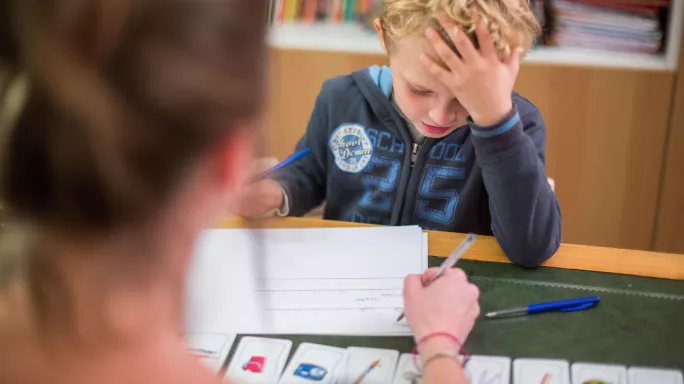If you surround yourself with people speaking a foreign language, your brain will eventually begin to decode it and understand the complexities within. This is how I’d describe my experience of teaching non-verbal students on the autistic spectrum.
Teaching children who struggle to speak or who are selectively mute can be extremely challenging, and everyone on the spectrum is completely different (even though I have autism, some of the methods I have found helpful in supporting students wouldn’t have worked for me during my early years of school).
But there are a few simple ways that you can aid communication and offer support.
Quick read: Autism: ‘If only I knew then what I know now’
Quick listen: Three golden rules for supporting autistic pupils
Want to know more? How pupils with SEND are being let down by a lack of advocacy
1. Make obvious mistakes
Children with autism can often spot errors quickly and efficiently, which means that if you encourage them to interact with tasks that have obvious mistakes, it may cause them to verbally correct you.
If you sing a song about hitting a drum while actually hitting a tambourine, for example, this could trigger a verbal response to correct your mistake.
It’s a simple technique, but one that can bring remarkable progress in communication.
2. Reverse routines
Get into the habit of starting the day by counting something visible (the number of stairs you walk up, pictures on the wall or chairs within the class). It should get to the point where the child expects you to do it every day. Then stop doing it.
As with the above example, it may trigger a verbal response correcting your error. Again, everyone on the spectrum is different, and you should be alert to the fact that this could result in discomfort.
But, in my experience, it’s a highly effective way to get a child to communicate.
3. Explore interests
It’s common for people on the spectrum to have at least one ‘special interest’. These can create a great sense of independence for a child.
When I was 8, I had piles and piles of my own research on sharks and could tell you any fact that I had read or researched from memory.
These interests can be used to encourage communication. If a child is fascinated by the tessellation of shapes, for example, you could work together naming each shape as they pick them up.
4. Try a picture schedule
A picture schedule is essentially a bank of pictures to indicate what time of the day it is. At a glance, students can see that it’s reading time, for example, which can reduce anxiety and give a sense of independence. Show them that after each lesson or section of the day is finished, that picture needs to be put away.
5. Get to know each child with non-verbal autism
Children on the spectrum have their own way of communicating. If you are teaching or supporting a child with autism, the best way to get to grips with their approach will be through trial and error after observation. It’s about trying to understand them before encouraging them to understand you.
Kate Shaw works with non-verbal autistic children in London




